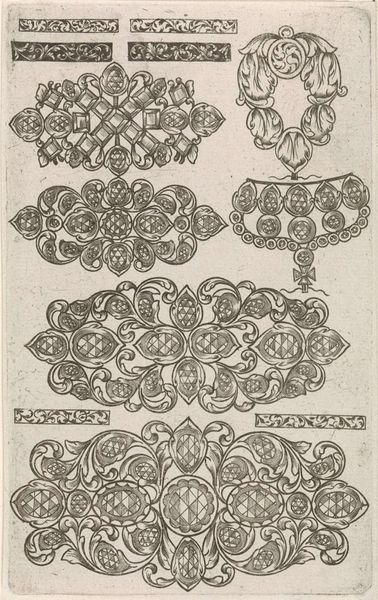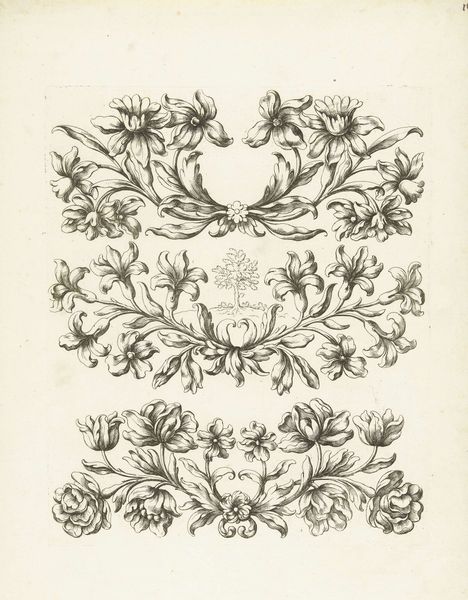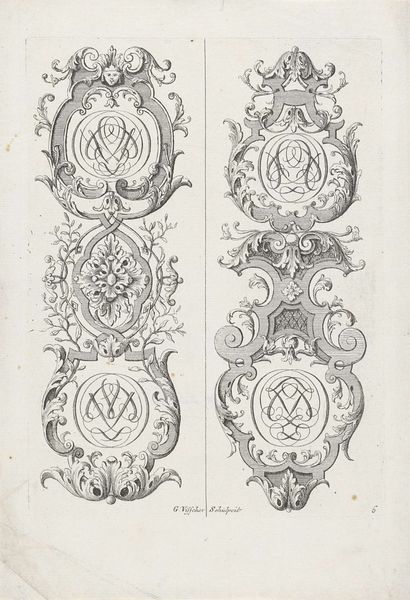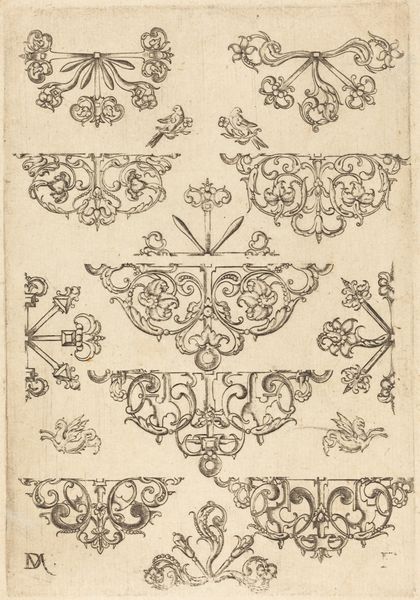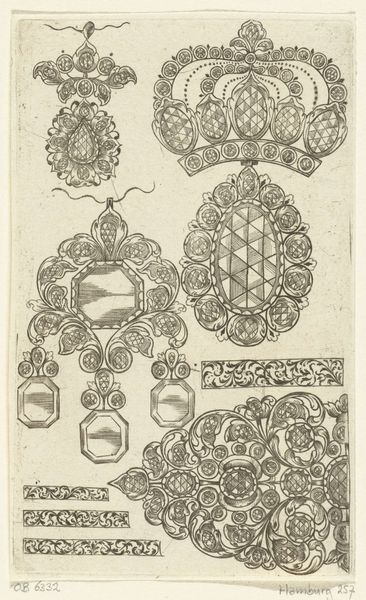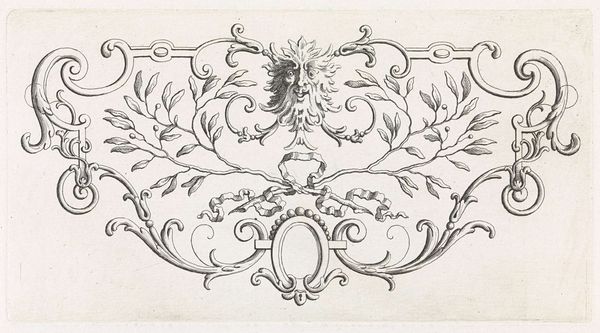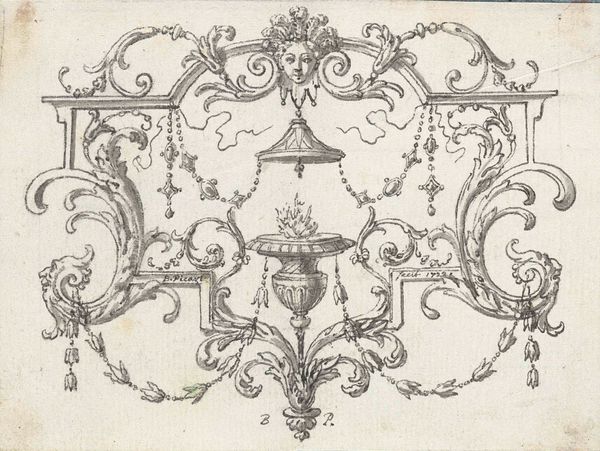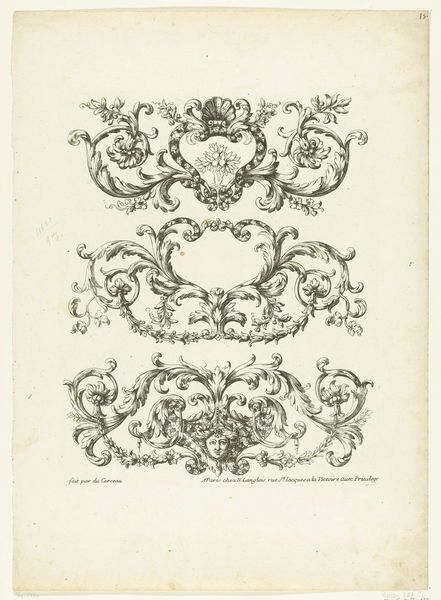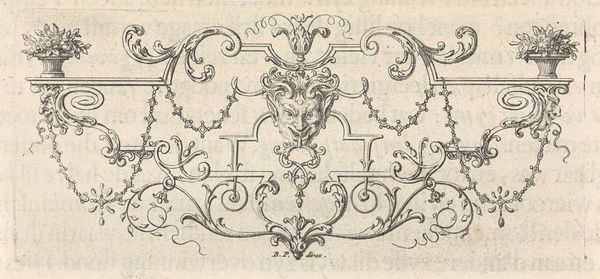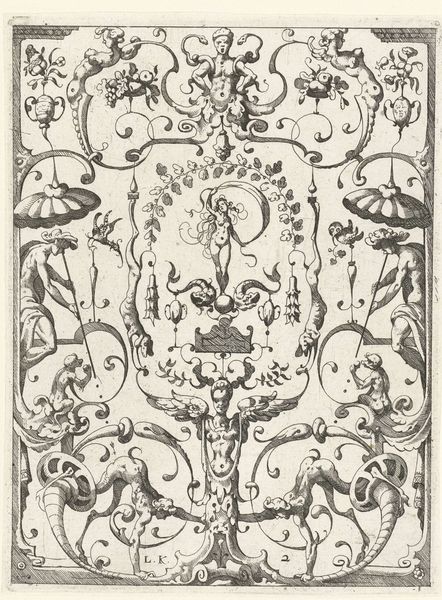
drawing, ornament, print, ink, engraving
#
drawing
#
ornament
#
baroque
#
pen drawing
# print
#
ink
#
geometric
#
pen work
#
pattern repetition
#
layered pattern
#
engraving
Dimensions: height 136 mm, width 84 mm
Copyright: Rijks Museum: Open Domain
Curator: Welcome. Today, we’re looking at "Zeven ornamenten," or "Seven Ornaments," a print by Daniel de Lafeuille, dating back to around the 17th century. It resides here at the Rijksmuseum. Editor: At first glance, there's a pleasing symmetry to the collection of shapes, though the rendering seems flat; despite its subject, it feels oddly lifeless. Curator: Considering it's an engraving, likely with pen and ink on paper, we have to think about its function. These weren't meant to be admired as artworks themselves. Instead, consider the workshops of goldsmiths or jewelers in the 17th century. Here, this print acts as a kind of catalog, a resource of forms to be directly copied, modified, and ultimately transformed into precious objects for consumption. Editor: That's an interesting perspective. Breaking down each shape through semiotic theory, one finds a clear baroque sensibility, with repetitive, layered patterns combined in symmetrical relationships, communicating excess and ornamentation in a language any European aristocrat would immediately understand. The lack of color, in the end, accentuates the form, like a sculpture cast in neutral material. Curator: Absolutely, and that's where the materiality shifts. What began as mass-produced print transforms into singular objects of desire. Consider also the social status imbued by owning such intricate pieces – wealth, power, and access communicated via jewelry created using patterns disseminated in pieces such as this print. Editor: One can almost see the influence on rococo style jewelry some years later; yet here, the design lacks that additional layer of fantasy found in later styles. Curator: It is far more pragmatic in a way. So while perhaps flat initially, its impact on artisans who crafted the luxuries of the age cannot be overlooked. These ornamental designs weren’t just aesthetics, but material templates deeply connected to labor, economics and social aspiration. Editor: A crucial artifact for comprehending how concepts evolved into matter and, through wealth and influence, came to signify so much more. Curator: Indeed. A deceptively simple print that unravels a much more complex story.
Comments
No comments
Be the first to comment and join the conversation on the ultimate creative platform.
